Most popular indoor flowers
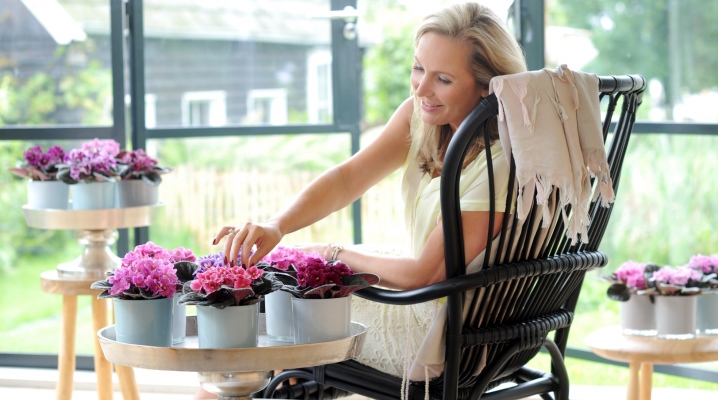
House flowers are a good way to ennoble your surroundings. In the winter season, the landscaped room resembles a summer oasis against the backdrop of snow outside the window. In today's article, we'll talk about the most popular indoor flowers.
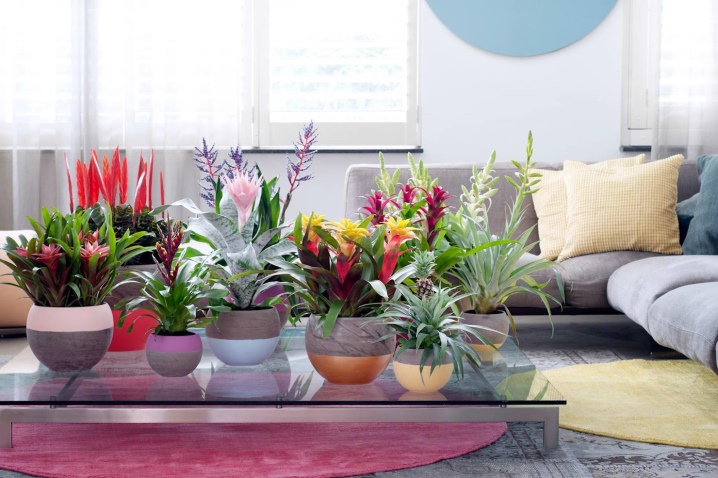
Overview of unpretentious plants
To decorate and equip their home, people purchase furniture and various decorative items, but few people think about how these objects negatively affect the quality of indoor air. Indoor plants can correct this situation, since they not only decorate the interior, but also purify the air and absorb dust particles. Also, flowers are able to cope with some chemical compounds.
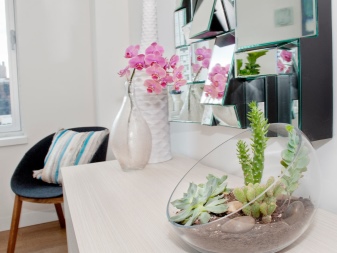
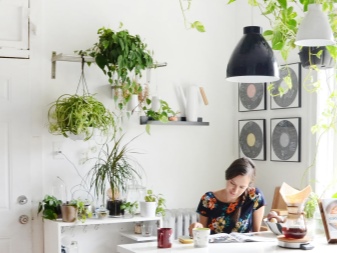
Consider the most common plants that can be found on every second windowsill.
Haworthia
The most unpretentious plant can be called haworthia, or, as it is also called, havortia. It is often called the "lazy plant" because it requires little or no maintenance. They only need watering every 1-2 weeks. A transplant is desirable in 3-5 years. The described flower does not require additional fertilization and irrigation. They don't need large pots either.
These flowers are ideal for busy people or scattered growers who forget about their horticultural crops.
This species easily tolerates a long absence of the owner, has an aesthetic appearance and is well suited for creating flower arrangements.
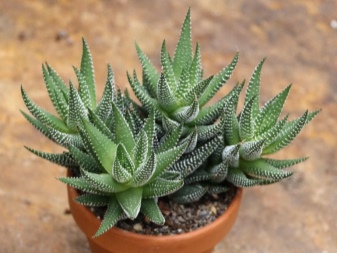
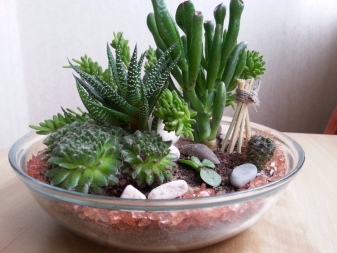
The main conditions for keeping Haworthia are as follows.
- Temperature. The described flowers easily adapt to both cold climates and heat. From March to October, it is desirable to keep this flower at a temperature of +15 to +25 degrees. And in winter, when the described crops come to rest, they need a lot of light and temperatures from +5 to +10 degrees. It is advisable to observe this condition, since a decrease in temperature contributes to darkening of the leaves. These plants are afraid of drafts.
- Lighting. Haworthia for good growth needs a long daylight hours and the required amount of ultraviolet radiation. This plant prefers the south or east side. In the summer it can be taken outside, but must be protected from drafts and precipitation.
- Watering. The described flower does not like frequent watering. There should be enough time between them to dry the soil at a depth of 4-5 cm. Although the plant does not need irrigation, it is advisable to carry it out every 3-4 weeks in winter, so that your plantings will grow faster. Otherwise, growth will slow down, but the plant will not die from this. Excessive flooding of any succulents leads to rotting of their root system, which will lead to the death of the culture. Watering must be done with water at room temperature, preventing it from getting on the leaves.
- Humidity. The leaves of this type are covered with a dense skin - this protects the plant from moisture evaporation and allows the flower to save the moisture available in it, and also reduces the need for frequent watering. In the summer, a small shower is desirable, only it is necessary to control so that the water does not stagnate on the leaves near the stem.
- Fertilizer. This species does not require frequent feeding. You can fertilize the soil no more than once every 2 months in the spring and summer. This requires a special feeding for succulents. It is necessary to feed haworthia with half the dose indicated by the manufacturer.
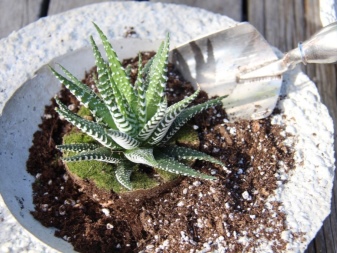
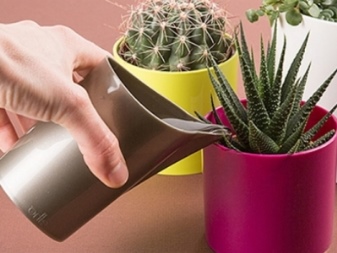
Cactus
Haworthia is far from the only unpretentious flower that grows at home on the windowsill.Consider the most unpretentious type of plant that, perhaps, every grower has - a cactus.
Cacti are native to America. In nature, they grow to impressive sizes. They grow well in desert climates such as Chile, Mexico, Bolivia. However, there is a forest cactus species that is found in the jungle. Desert and forest subspecies differ in the conditions of the care they need.
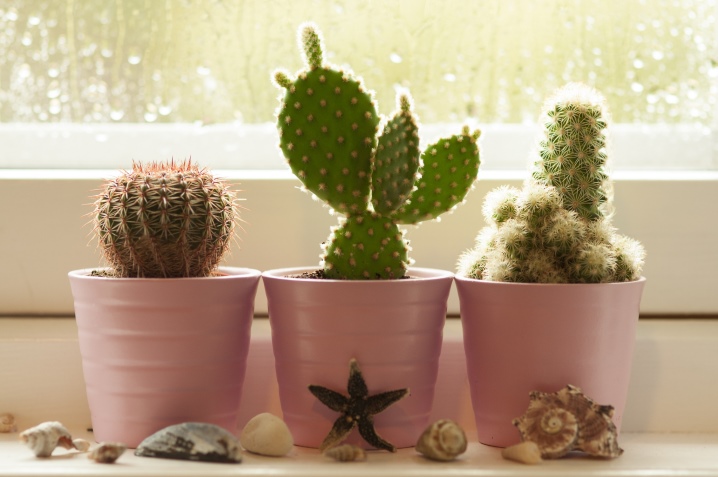
Fat woman
Few people know the name "fat woman", but many people know what a "money tree" looks like. It is sometimes called the "tree of happiness" or "the monkey tree." These names mean succulent, loved by all growers for its simplicity of content.
The name "money tree" got its name for the leaves in the form of coins. Feng Shui teachings that this plant can improve the material situation of its owner, help to gain wealth if it is grown in the right place, which is the southeast or south window. The leaves of the tree are thick. In them, the culture accumulates nutrients.
It is believed that this tree cannot be bought, it can grow on its own. To do this, you will need to purchase a plant shoot from friends or neighbors.
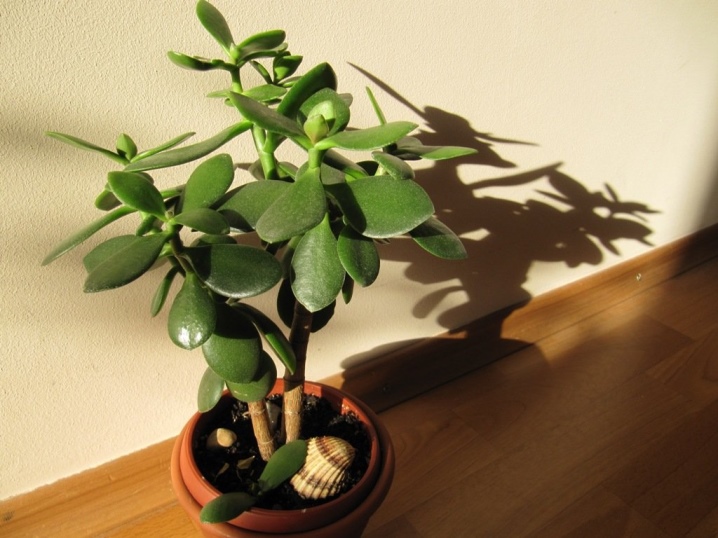
This culture is not difficult to care for. In the summer, when the rate of its growth is maximum, watering should be done only after the soil dries up, which happens about 1-2 times a week. It is undesirable to overmoisten the described species, since in nature it grows in a dry climate. For the rest period, watering is reduced to 1 time in 2 months.
The frequency with which you need to water the flower depends on the air temperature. For this plant, humidity does not play a special role, therefore, the overdried climate of the apartment does not harm it. It is not necessary to spray the leaves, but it is necessary to wipe them from the dust accumulated on them as they become dirty. Ventilation of the room is necessary for this plant.
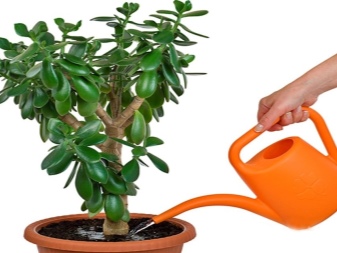
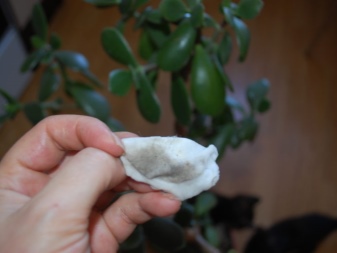
The culture will survive temperature drops of a dozen degrees. The daytime temperature can be 20-22 degrees, and maybe 6. The described plant is very fond of light, and it needs a lot of lighting all year round. The leaves of this plant are not afraid of direct sunlight, but with prolonged exposure to the sun they will get burned. 1-2 times a month, the succulent can be fed with fertilizers for cacti.
Schlumberger
This is one of the few plants that grows on the windowsills of all houses and apartments. At a time when the choice of home flowers was not as great as it is now, this lovely plant delighted the eye with bright flowers at the very beginning of winter. In late autumn, many buds appear on it to open and bloom in December. Exactly therefore he was nicknamed "Decembrist" or "Barbarian's color" - at the very peak of its flowering - December 19, Barbarian day is celebrated according to the Orthodox calendar.
Many people think that this forest cactus needs a lot of light for a good and comfortable flowering. This is a mistake, since this type of indoor plant does not receive a lot of light in nature because of the trees.
The most optimal for him will be the northern or western windowsill. South and East are acceptable with a little shading.
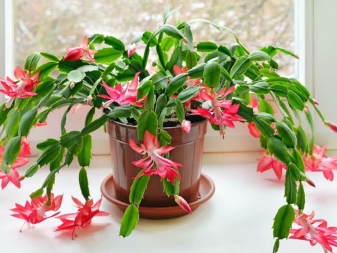
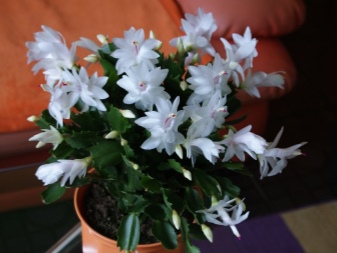
Many flower growers are wondering whether the Decembrist also needs additional lighting, because it blooms in winter, when the daylight hours are as short as possible. No, it doesn't. This is due to the fact that the blocked kidneys must go through a cycle of a gradual decrease in solar activity and a decrease in daylight hours.
The Decembrist loves very loose soil, without the slightest stagnation of water in it. In nature, these plants live in trees and between stones, where there is no liquid retention.
Water the crop as the topsoil dries out. The roots should not be allowed to dry out, but it is also not necessary to keep them constantly wet. From the end of autumn, watering is gradually reduced, which leads to the laying of flower buds.

Spathiphyllum
Representative of the Aroid family.This interesting plant looks impressive. The culture combines about 45 different species. In nature, a beautiful and eye-catching plant is found in the forests of Brazil, Colombia, Venezuela.
Growing conditions are not very difficult:
- flowering occurs from April to July;
- culture needs a lot of sunlight;
- in spring and summer, the ambient temperature is required from 18 to 22 degrees, and in winter - not lower than 10 (16-18 degrees is considered normal);
- watering occurs after the soil dries out 1-1.5 cm deep, and in winter it is done less and less often, but do not allow the soil to dry out completely in the pot;
- the air should be as humid as possible, it is advisable to put the flower pot on wet expanded clay;
- systematic spraying of a flower is necessary for its normal growth and development, and when buds appear on it, this must be done more carefully so that water does not get into them;
- during the growing season, it is necessary to feed the plant 1 time per week, for this, mineral fertilizer is used. In winter, the regularity of feeding is reduced to 1 time per month.
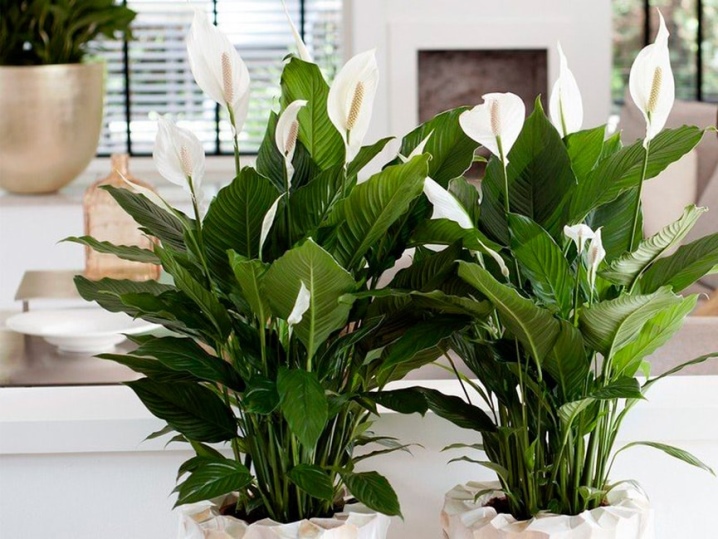
Anthurium
A plant that pleases its owner with bright colors. With proper care, this attractive crop is capable of blooming all year round. This species has varieties with beautiful decorative leaves that can be matte or glossy. The shape of the leaf plates is also different:
- rounded;
- heart-shaped;
- there are options with a dissection on the sheet;
- spatulate.
In a tropical forest, where humidity is always high (at home), the leaves of this flower follow the sun.
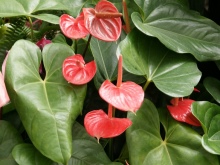
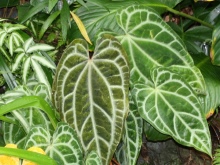
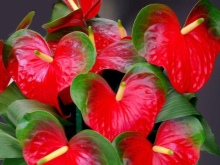
The described plant is very demanding for watering. It should be done regularly, but excess water can kill the plant, as can dry out the soil. After watering, you need to look into the sump: if there is excess water in it, they need to be removed. The flower should receive only moisture from the soil.
The regularity of watering depends on the condition of the soil:
- when the top layer dries out to a depth of no more than 1 cm, it is necessary to water again;
- during the heat in the room, the regularity of watering increases, and at low temperatures it decreases;
- in the summer season, watering must be done at least 2-3 times a week, and in the winter, 1 time will be quite enough.
The water for the flower should be at room temperature, settled or rain. This condition is mandatory, since the leaves of the plant will turn yellow from the calcareous liquid.
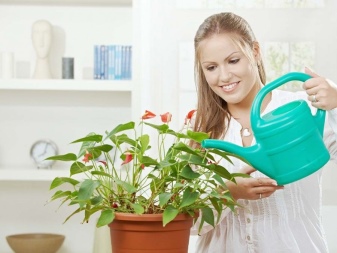

Dieffenbachia
Native to South America, this striped flower is an evergreen shrub. This feature keeps the leaves bright green even in winter in the “apartment” climate. Sometimes during the cold winter season, dieffenbachiae can turn pale, but still retain their green color. In the conditions of apartments, this shrub practically does not bloom, and its flowers do not represent aesthetic value in comparison with the leaves.
In addition to aesthetic pleasure, the plant is able to ozonize the air in the room, slightly controls humidity, and is also able to clean the air not only from dust, but also from some harmful compounds. It is believed that A "healthy" flower can even help with allergies.
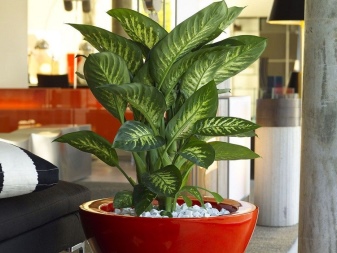
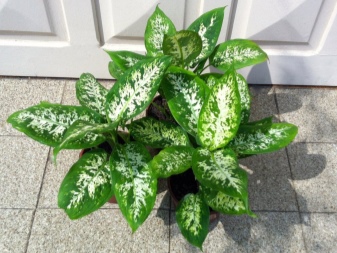
However, this plant has a serious disadvantage - poisonous sap. It is poisonous to both humans and animals.
Propagating flowers by cuttings without gloves can burn your hands. If juice comes into contact with an open area of skin, an ulcer may appear. If a child or pet chews a leaf of a plant, anaphylactic shock can occur.
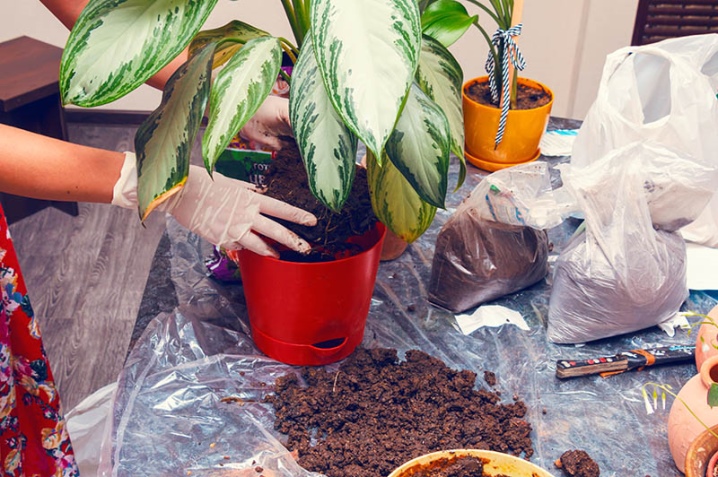
Ficus
One of the most beloved plant by all flower growers. The reason for this is the beauty of its leaves and their decorative effect. A large number of varieties of this flower are grown at home:
- rubber;
- lyre;
- Benjamin;
- dwarf.
Outwardly unlike each other, they are contained in the same way. Caring for them is very simple.


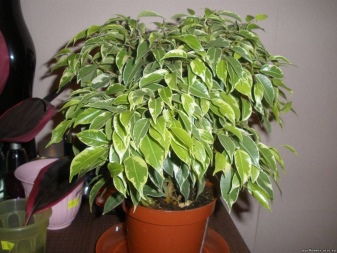
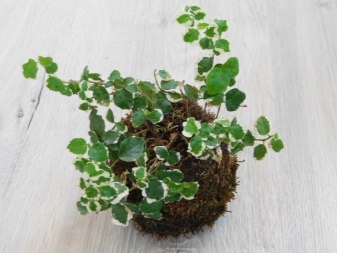
A large amount of light is the most important condition for high-quality growth of ficus. In winter, when daylight hours are short, the ficus needs additional lighting. Lack of light is the main reason for leaf fall. Daylight hours for the growth of this culture should be at least 12 hours.
In summer, the described plant requires abundant watering, and in winter - moderate. The soil should dry out a little between waterings, but not dry out completely. In winter, excessive moisture is not allowed, as this can lead to rotting of the roots, and sometimes the base of the stem.
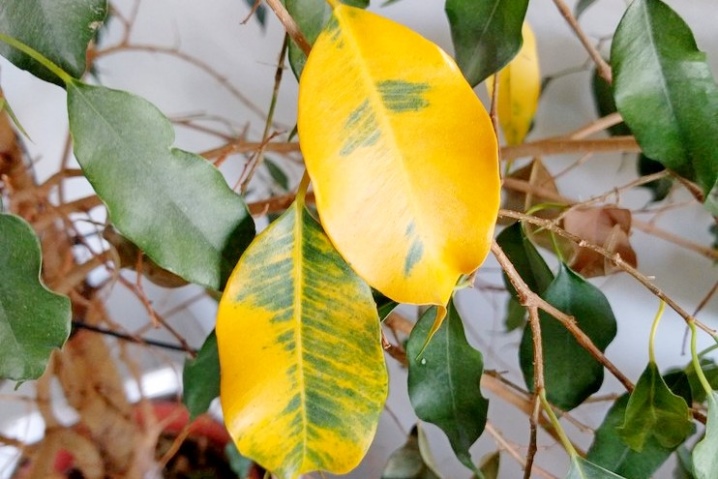
Begonia
This plant is the most numerous, uniting about 1000 species in its genus. This culture is found in the mountains of India, the Himalayas and Sri Lanka.
When caring for the described flower, constancy is necessary - it is important to define for him a place where he will always be. Good illumination is important for him, but the absence of direct sunlight. This plant does not need a large amount of moisture, air humidity is more important to it. Otherwise, the tips of the leaves will begin to dry. It is necessary to water the culture as the top layer of the soil dries up with settled water at room temperature.

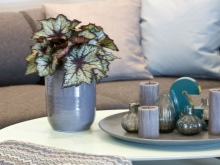
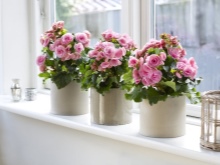
Violet
These flowers are a favorite of many housewives. In some countries, the flowering of violets symbolizes the arrival of spring. You need to water this charming girl through the pallet, and not like most other flowers. This is due to the fact that the ingress of moisture on the leaves causes the development of fungal diseases. Through wet spots, leaf plates can get sunburn even in winter.
This plant needs to be watered in a special way. It is necessary to install a pot with a violet in a pallet or other container, then you need to pour settled water at room temperature up to a third of the height of the pot. After about 20-30 minutes, you will see how the topsoil has darkened, which means that the ground has been saturated with the required amount of moisture. After that, you can take the flower pot out of the water and put it in its place.

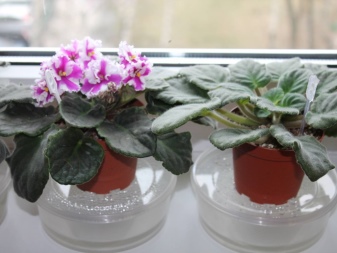
Monstera
This flower is one of the popular houseplants.
It has been proven that indoor monstera is capable of ionizing the air, which is an undoubted advantage of this plant.
In the summer, watering this flower is done after the topsoil dries out. With the arrival of autumn, watering is gradually reduced. And in winter, planting is moistened only after the soil is one third dry.
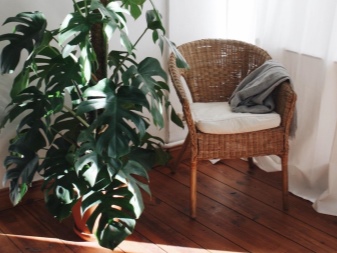
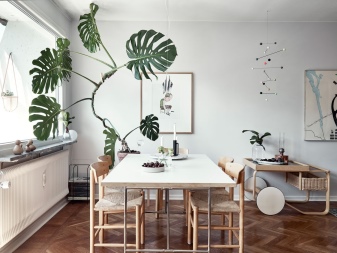
Geranium
This flower grows well not only at home, but also in flower beds. In total, more than 400 species of this culture are known in the world, but only 40 of them have taken root in Russia. At home, such a plant retains its decorative appearance for 4-5 years, and with proper care, this period can increase to 10 years.
The plant does not like drafts, it needs bright light, frequent watering, but not excess moisture. In spring and summer, you need to water geraniums more often - without water, the leaves will lose color and begin to fall off.
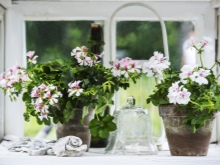
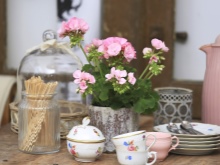
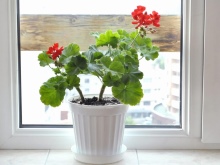
Which ones are better to grow at home?
This question cannot be answered unequivocally. Everyone chooses flowers for himself according to certain criteria, and most often this choice is based not on the characteristics and rules of care, but on whether he liked a particular flower or not.
The following plants are most commonly purchased.
- Orchid. This flower is believed to have love energy. Its presence in the house helps to raise the mood and purify the aura. Caring for him cannot be called too difficult. The culture looks really chic and elegant, fitting even into expensive interiors.
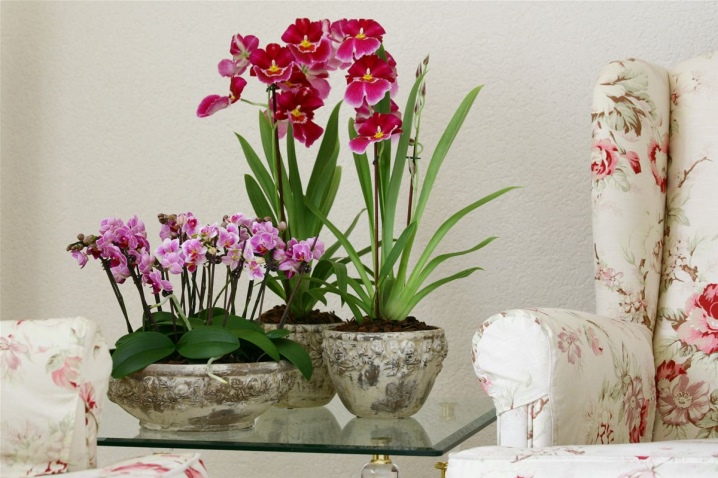
- Lavender. It is recommended to have such a flower in your home for people with health problems. Besides the pleasant scent she emits, her scent has a soothing effect.
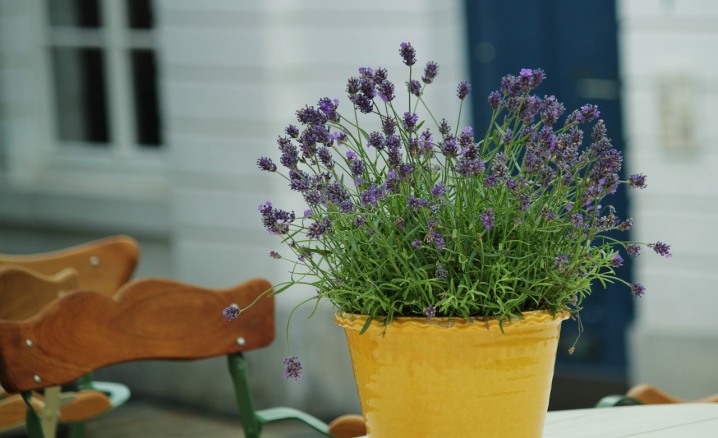
- Geranium. Small flowers with a specific scent have a calming effect.The owners of this flower normalize their sleep, improve their mood and rarely have a cold. The flower is easy to care for and beautiful.
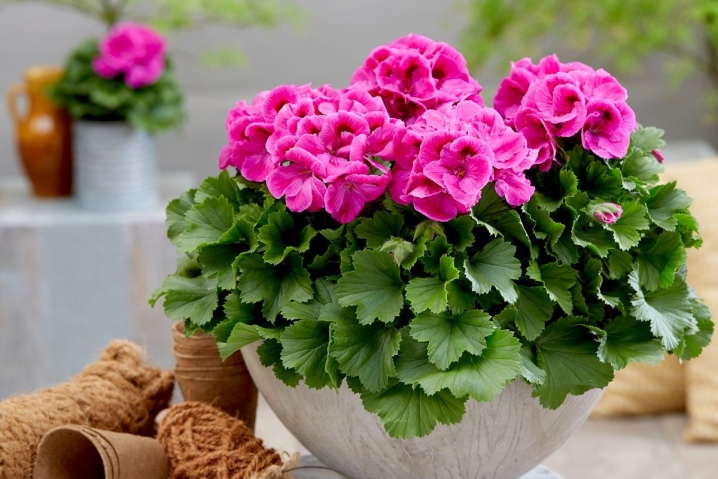
Examples of
Tall indoor plants in large white pots always stand out against the dark parquet flooring. The soft pink color of the buds will bring an atmosphere of tranquility and comfort to the room.

Deep red royal geranium goes well with a retro style armchair and upholstery that has red hues. Against the background of a light wall, this composition looks like a corner for relaxing or reading books.

For the most popular houseplants, see below.































The comment was sent successfully.